brands don’t have to feel so neutral
Podcasts are so lovable because they’re so human. Here’s what we can learn from them.
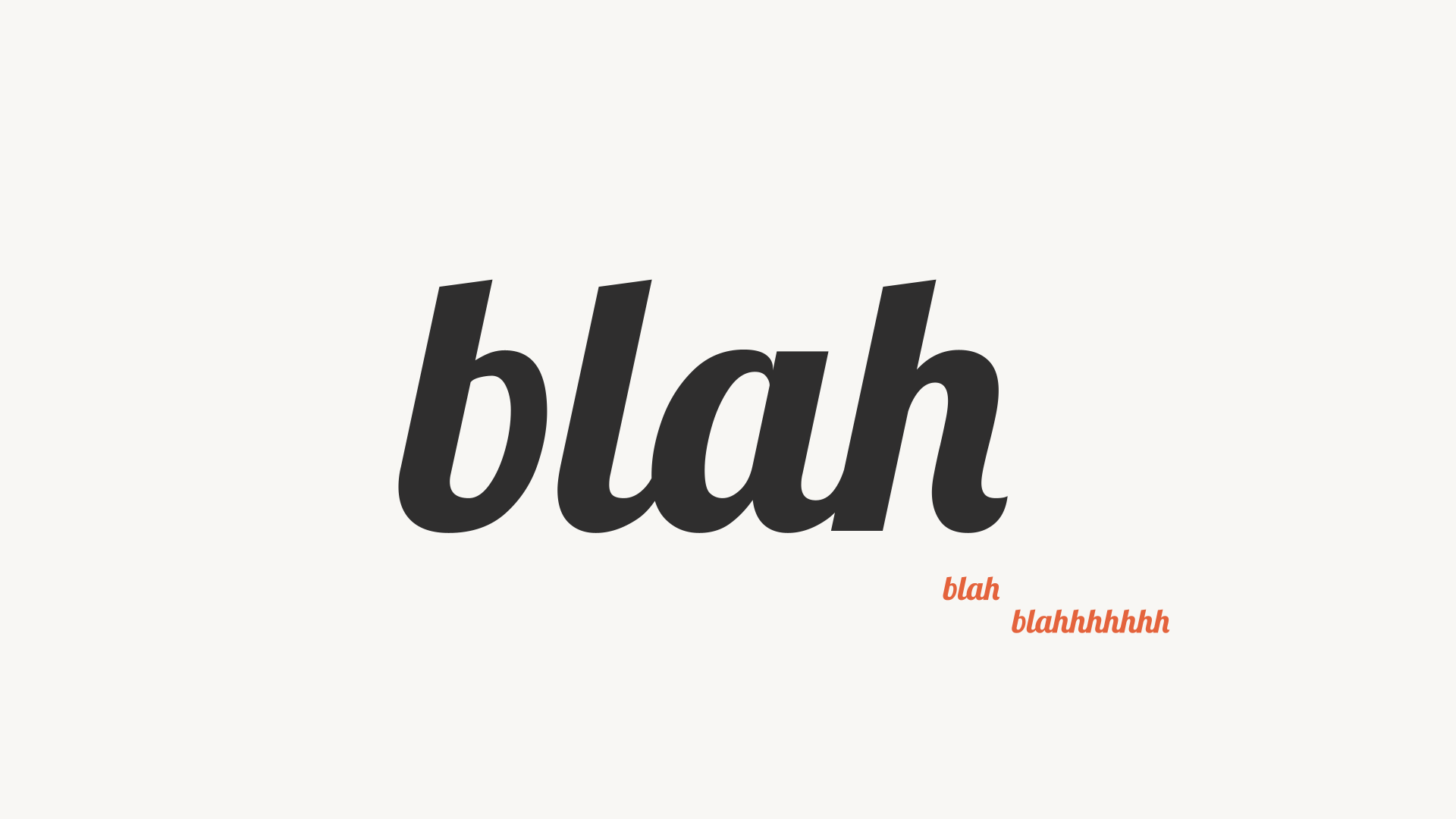
When I play an episode from one of my new favorite podcasts, I feel the same buzz of excitement that I used to get when I’d hop into a friend’s car as a teen: giddy expectation for the carefree conversation that’s to come, mixed with the coziness of sinking into time and space with a friend.
It’s been a few years since I’ve listened regularly to podcasts or felt like a fan of one, though my consumption spiked dramatically last month while I was glued to the couch with a concussion. I first bounced between a handful of different podcasts, and then I rapidly became attached to two of them in particular and did a complete deep dive into their archives: Vibe Check (news and culture) and After Bedtime (parenting). I’d even say that I’m entering ~superfan~ territory.

It’s not surprising that I’ve become a fan of either of these — both are well-produced, they cover content that I’m already into, and have hosts who are skillful and likable (I also really did listen to a lot of episodes). What’s more interesting to me though is how the superfandom has affected my typical internet behaviors: I’ll now willingly dive into an episode where the content matter doesn’t particularly interest me, partly because I trust the hosts to lead me through the topic in an interesting way but also because I genuinely care about them and want to hear everything they say. Even though it was my interest in the content that initially led me to subscribe, it’s my emotional attachment to the hosts that keeps me coming back.
Podcasts are unique in this way because they’re so human. It’s easy to become attached to a podcast because you’re primarily getting attached to a person. Most brands, on the other hand, feel distant and sterile because they’re lacking in emotion or they don’t feel like anything at all.
It’s easy to assume that a brand should look good, sound professional, and only ever talk about its product or service. But even the blandest, most corporate brand on the planet has to occasionally humanize itself to get noticed by real people. Most tv ads, for example, are doing exactly that — a Dove commercial isn’t ever really about the bar of soap as much it’s about the inclusive, body-positive outlook that’s embodied by the brand. The product is just an excuse to connect over something more powerful.
A neutral, unfeeling brand will only ever reach the people who want to do business with you — and that creates a transactional relationship that can quickly crumble when circumstances inevitably change or a better option emerges. By humanizing your brand and infusing it with emotion and life, you’re creating the conditions that foster superfandom — and it’s the superfans who will go out of their way to support you and recommend you to other people (the true backbone of small business marketing). So if you want them to hold on to your brand and pass it on to others, you’ll need to give them something to grasp onto and connect with.

How brands do it
They talk about themselves or offer a personal touch.
The most straightforward thing to do is to show your face and talk about yourself. You’re an important part of your business and your business is an important part of you. By inviting people to know you, you’re inviting them to have a deeper relationship with your business.
Germantown Kitchen Garden, aka Amanda Staples, posts two types of things on Instagram: 1) updates about the farmstand and the growing season, and 2) super wonderful and reflective personal narratives about what she’s doing and what she’s experiencing and how she’s being pushed/pulled by everything around her. As we all watch her take care of the farm and the community around it, we become active caretakers for her, the farm, and everything that growing/buying local stands for. Our care mirrors her care and our connection to her business is stronger because of it.
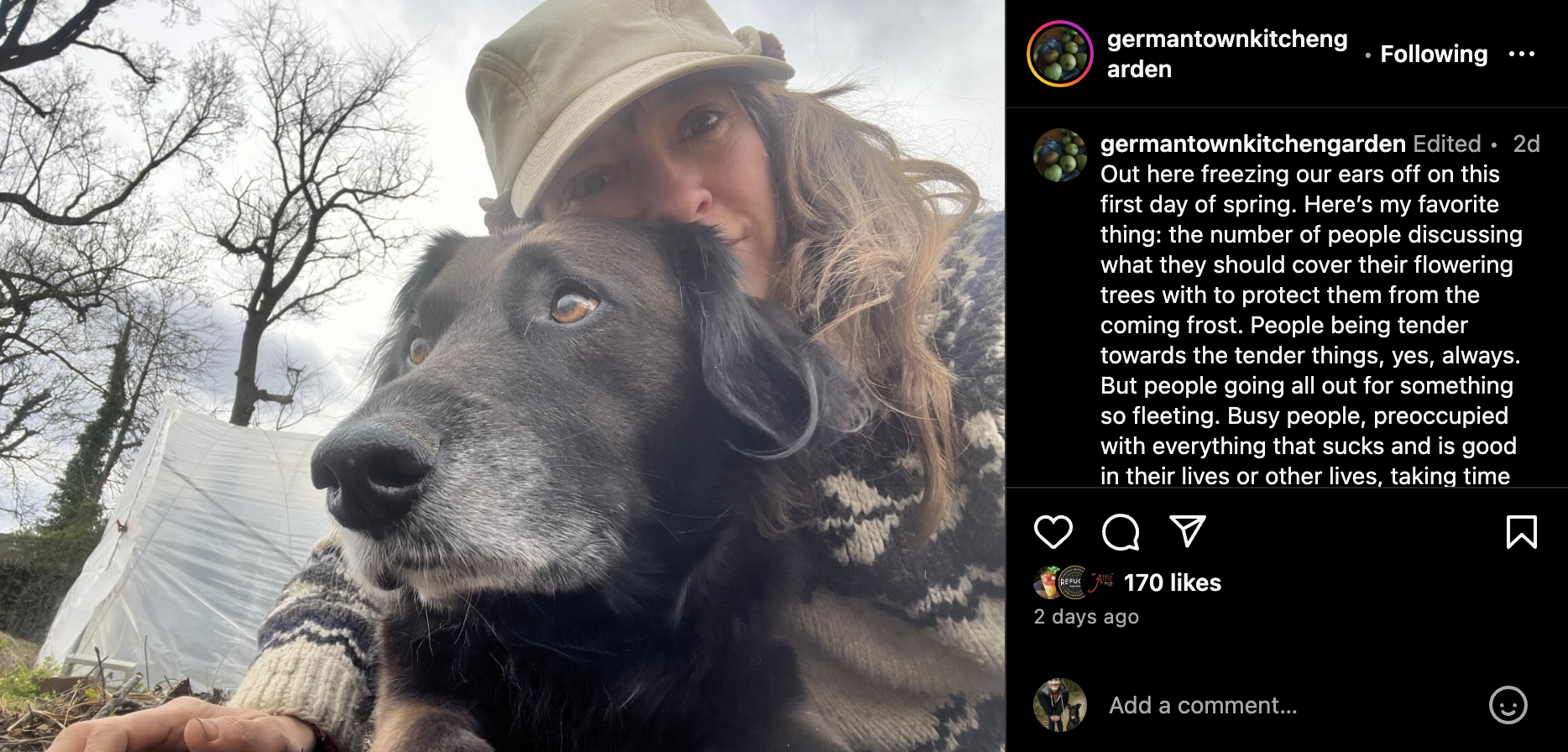
Some brands may not see an opportunity to add a personal touch to the same degree that Amanda can — maybe because they feel like their business is too big or complicated — but Yowie has experienced the full spectrum of growth and still maintains that personal touch. It started as a one-woman boutique in 2016, created and curated by Shannon Maldonado, and has since grown into a hotel, cafe, and design studio. Throughout its growth, the brand is still meticulously curated by real humans, and so the wording of their Instagram posts has now changed to reflect the growing team that’s behind the brand. We haven’t lost Shannon entirely though, she still pops in and reminds us that business growth and a personal relationship can go hand in hand.
They involve their community in the life of their business.
To close the distance between you and your audience, find ways to talk with them and include them in whatever it is that you’re doing.
Refuge Midwifery hosts an ask a midwife anything fridays where co-owners Ray and Victoria both take part in answering audience questions on Instagram. These sessions check a lot of boxes, but maybe the biggest strength is how they reach both of their main audience groups simultaneously: the people who need a midwife and the people who are midwives. The sessions are substantive and establish expertise, but at the same time, they feel familial and contribute to a sense of involvement.
When the brand is larger, the relationship-building needs to scale up without losing that sense of intimacy. So rather than having a one-on-one relationship, it can have the vibe of a team or club.
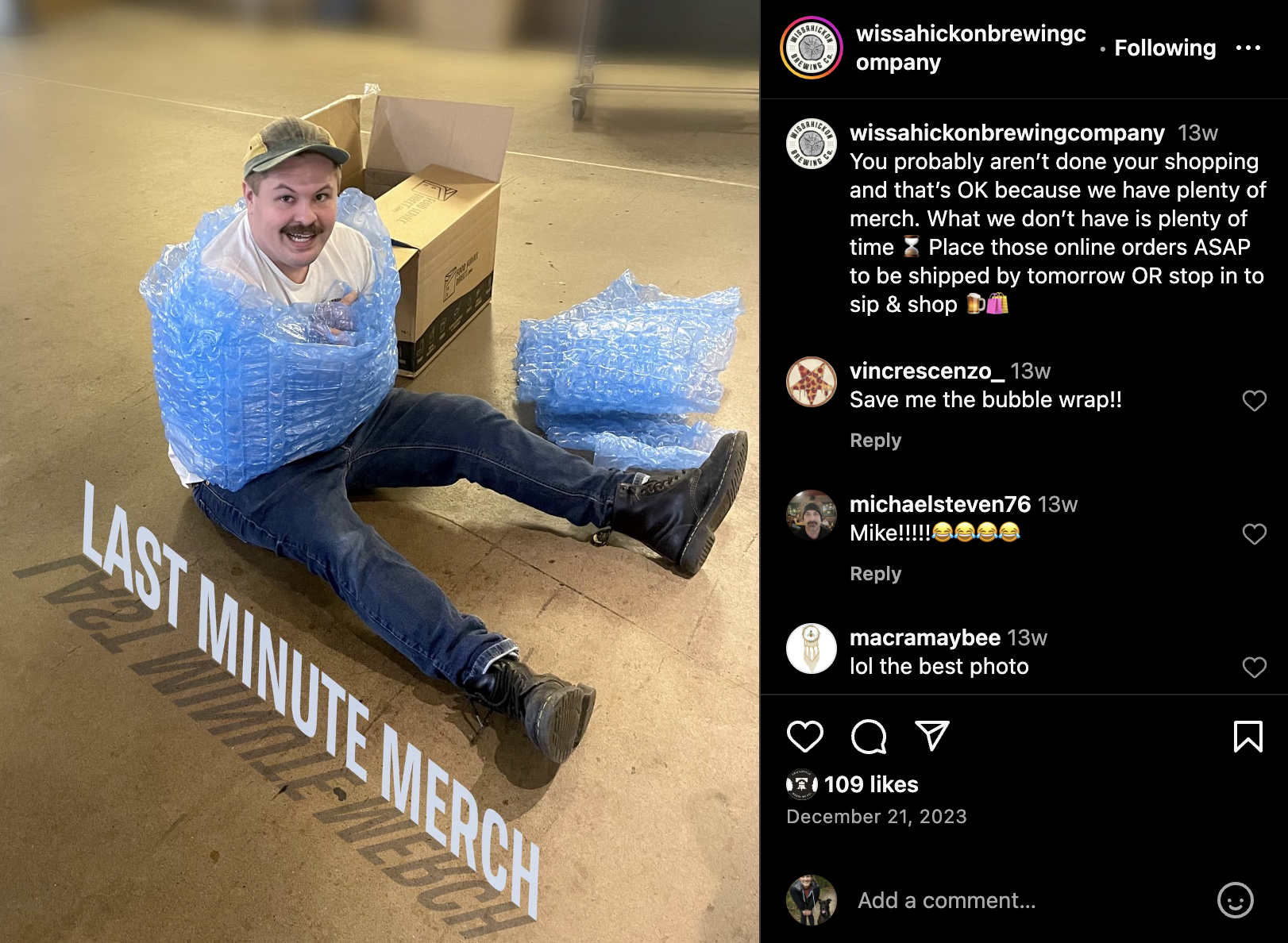
Wissahickon Brewing Company uses inside jokes that make you feel like you're in the know, hosts specific events that make you feel like you're a card-holding member of a beer club AND a fiber arts club, and they directly feature their bartenders and brewers as if they’re the team captains bringing us all along on the journey. It leaves you feeling like you’re an active participant in the life of the brewery.
They share a common philosophy or idea.
People can feel connected to an idea or a shared philosophy just as much as they can connect to a person. An easy is a nonprofit: when we latch onto a nonprofit organization we’re primarily connecting with its mission. Sharing an idea, mission, or philosophy brings people together by establishing a common ground.
Refugia Design is a residential landscape design-build firm that specializes in creating native habitats, and all of their clients share a passion for replacing grass lawns with dense, biodiverse planted areas that don’t require gas-powered lawn tools to maintain. They’ve made serious headway too, as evidenced by the Greenway Network, a map where they keep track of all the habitats they’ve created so far. It’s easy to latch on to the Refugia brand because Refugia stands for something much bigger and more important than just the landscaping services they provide alone. It taps into climate change angst, an appreciation for the natural world, and the desire to do something impactful for your community and planet. There’s a lot there to grab onto.
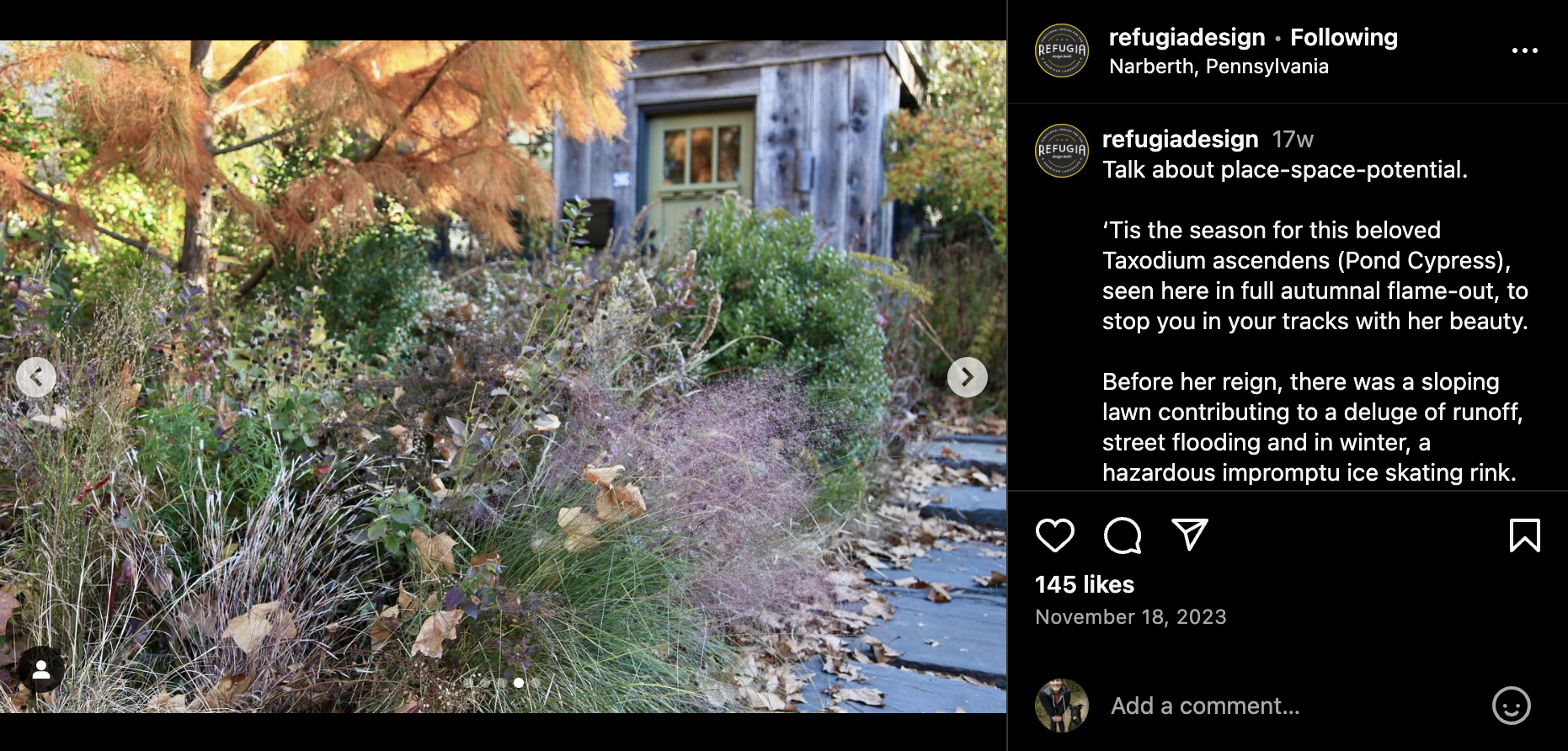
The thing that you share with your audience can also just be something that you all have in common. The Nesting House is a store for new and used children’s goods that embraces the fact that parenthood is hard to enter and exit gracefully. They sell and buy goods to help facilitate and ease the transition, and they also have events, swaps, rental programs, and support groups. Everyone is there because they share the same reality and want to participate in the giving and taking of goods and knowledge.
And sometimes they have a distinct voice, personality, or spirit.
A brand can also embody a fully-formed “character.” It can have a sense of humor, a way of speaking, strong opinions, or a unique style. These traits will come out in the way things are worded, what colors and imagery are used, which businesses are collaborated with, or what’s talked about. It’s the *vibe*.
Middle Child, a diner/deli/sandwich shop, is the literal dictionary definition of this approach. Their zany energy is pervasive throughout all their branding, merch, language, collabs, menu items, and more.
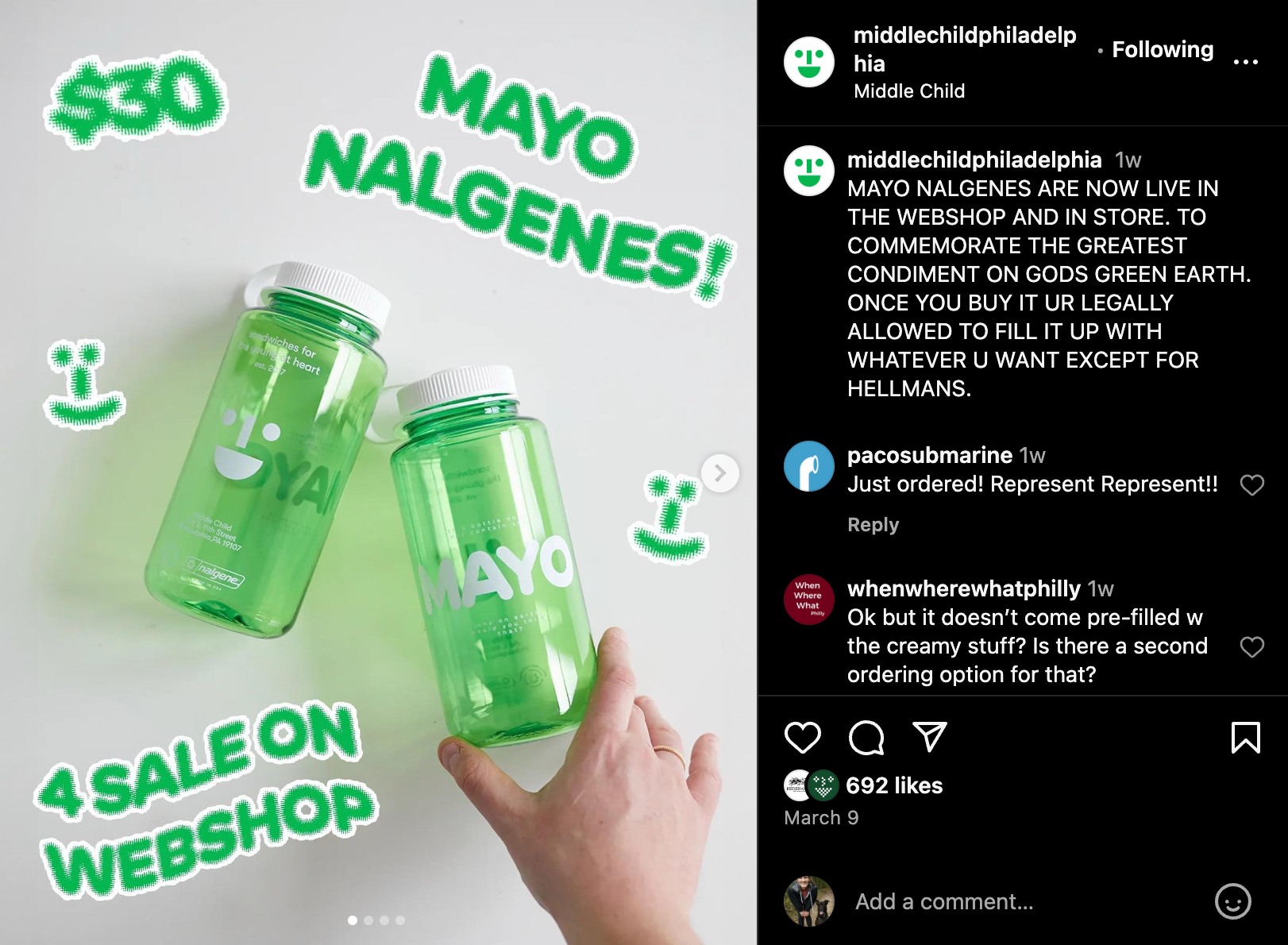
Most brands won’t come out of the gate looking and feeling like Middle Child though. It might emerge once you’ve got a sense of who your customers are, what your competitors look like and do, or what everyone seems to latch onto when they walk through your doors. Personalities can be polarizing too, which can be a good or a bad thing depending on who you’re trying to attract. It’s like growing up — it will take some experimentation and time to figure out what your (brand) identity is (and some screwing up), but once you’re there, it’s effortless.

about anne marie
Anne Marie is a designer and diy-er who lives in Philadelphia with her partner, Alyssa, and two cats and a dog. You can find her on Instagram and LinkedIn and at amlindemann.com. Reach her directly at: annemarie [at] amlindemann [dot] com.

